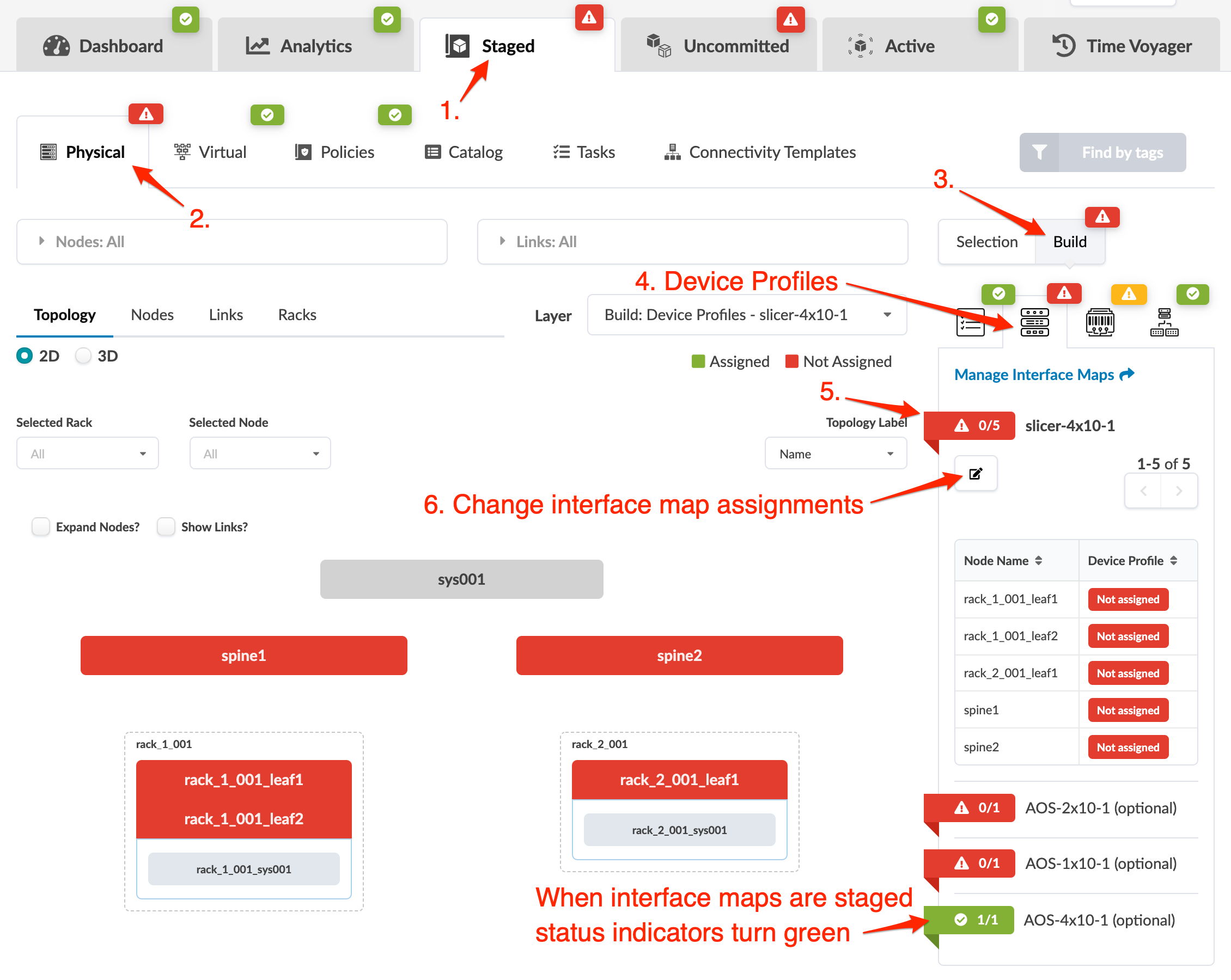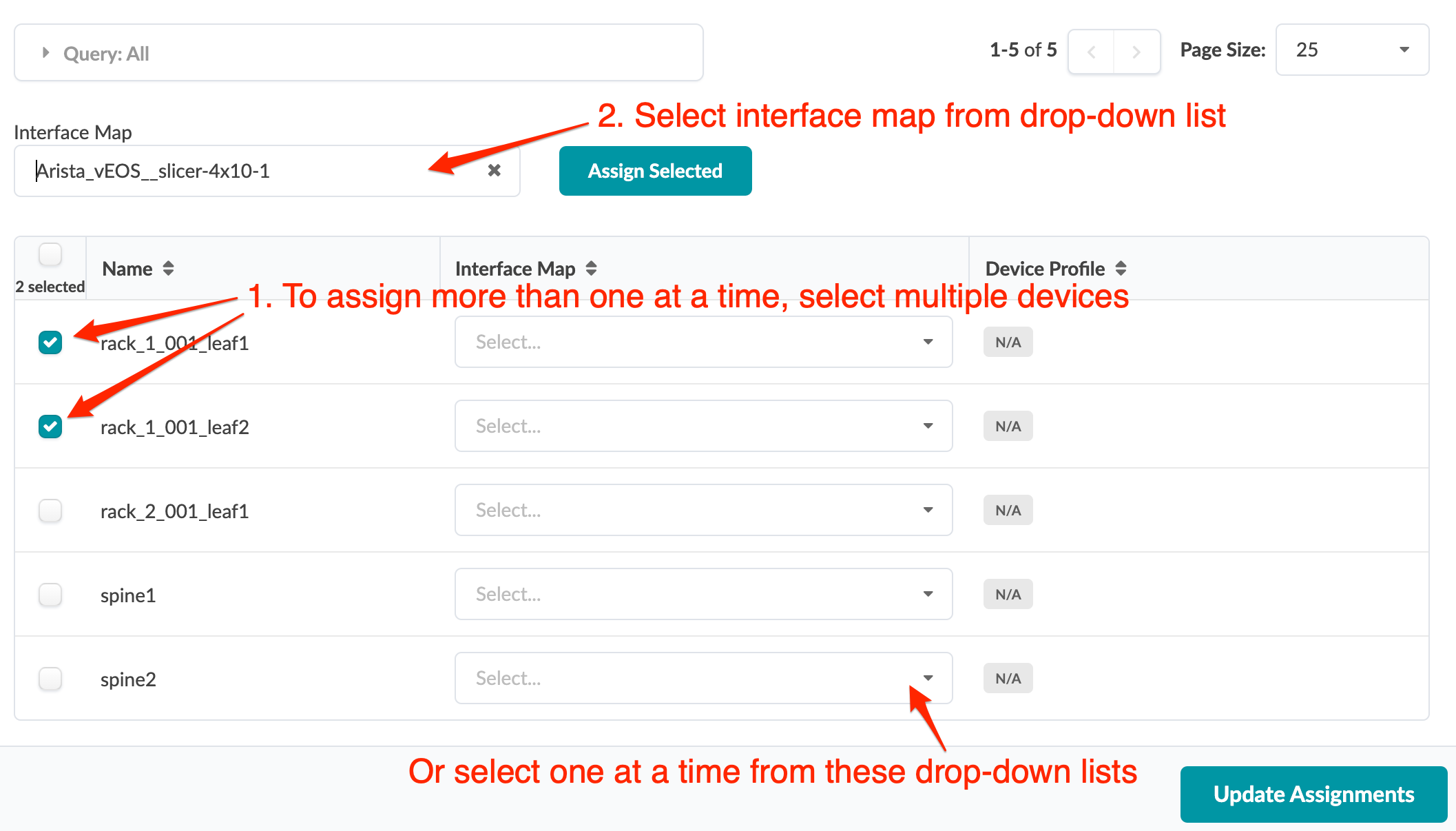Update Device Profile Assignment (Datacenter)
-
From the blueprint,
navigate to Staged > Physical > Build > Device
Profiles.

- Click a red status indicator, then click the Change interface maps assignment button (looks like an edit button). You assign device profiles by assigning interface maps.
-
Select the appropriate interface map from the drop-down list for each node. Or,
to assign the same interface map to multiple nodes, select the ones that use the
same interface map (or all of them with one click), then select the interface
map from the drop-down list located above the selections, and click
Assign Selected.

- Click Update Assignments. When the red status indicator turns green, the device profile assignments have been successfully staged.
